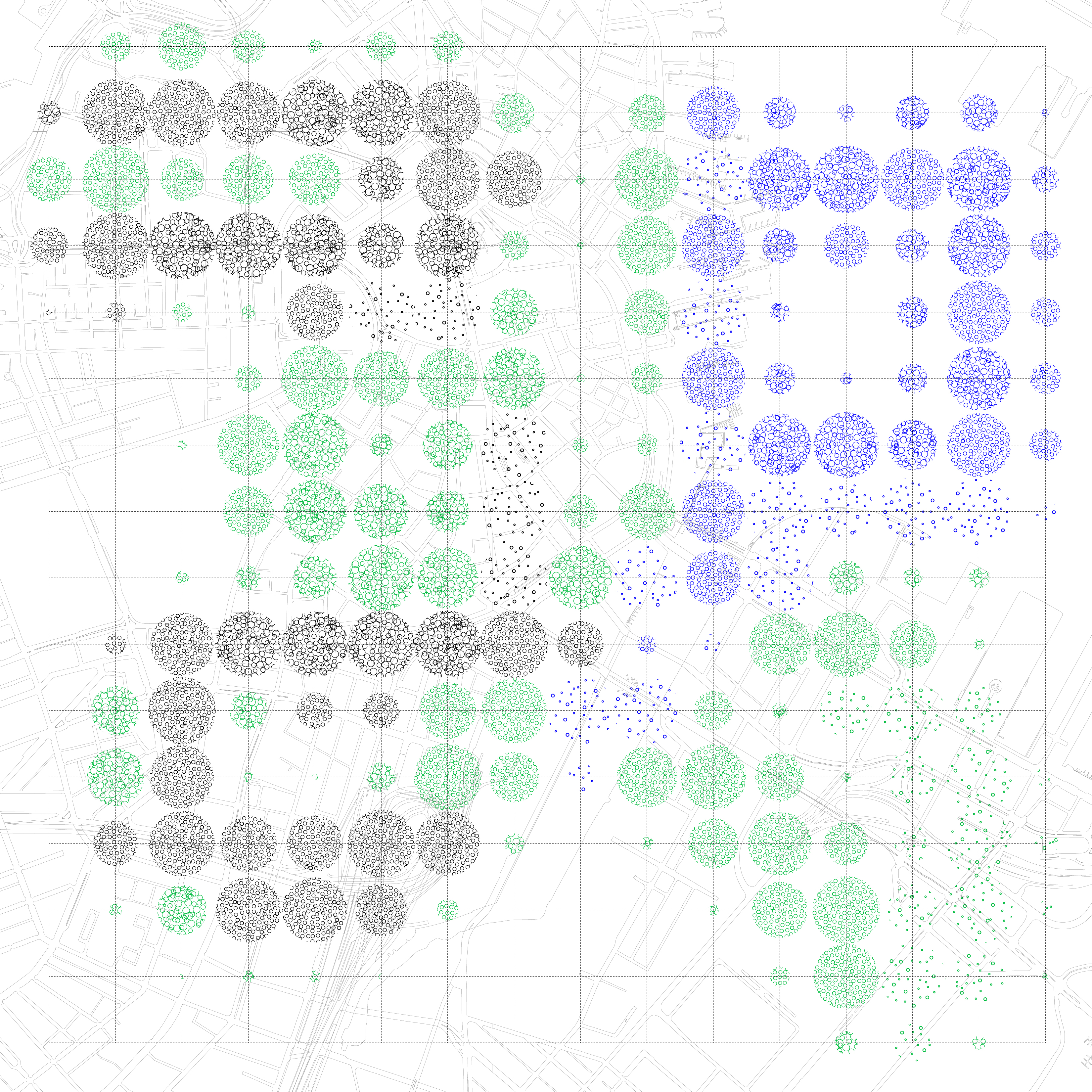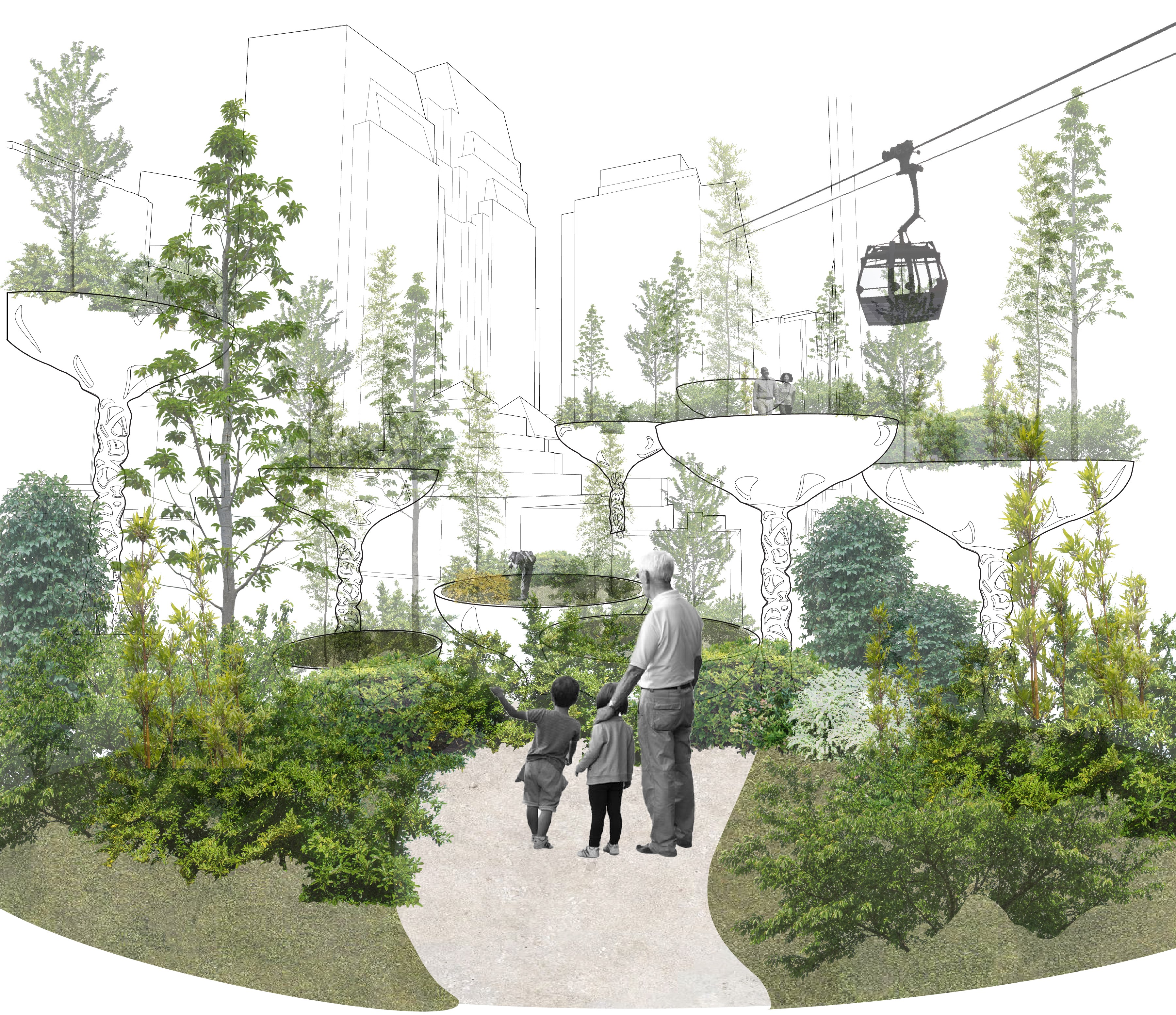
megaflora forest
landscape design studio
program
era
location
mission
era
location
mission
urban installation - landscape design
spring 2023
waterfront, boston, ma
develop new layer of vertical landscape
spring 2023
waterfront, boston, ma
develop new layer of vertical landscape
drawing inspiration from cellular mitosis and parametric design, this vertical forest masterplan utilizes planter columns to add a new layer to boston’s north end while fighting coastal erosion, mitigating urban heat island, and providing amenities. the columns are placed in variable densities and sizes determined by an attractor field of the neighborhood’s hottest areas. the resulting web of modules has three primary functions in the water, on the land, and integrated with human structure.
each module is formed of webbed concrete to reduce carbon footprint and create space for plants and animals to thrive. the tallest and largest planters can be occupied by humans, accessed through puzzles, cable cars, and gymnastics. as they vary in size and height, the planters feature correlating flora and fauna, making each tower the host of a unique ecosystem.
the three typologies of blue, green, and gray correspond to different species of plants and different goals of ecological intervention. the blue towers occupy the water and the harbor, providing a barrier to coastal erosion, as well as valuable homes for native oysters, fish, and aquatic plants. the green towers house a variety of local species of plants, acting as passageways for birds, bees, and butterflies, while simultaneously providing shade to the city. these units occupy a multitude of landscapes, such as the tops of roofs, parks, and roadway medians. the gray planters are placed primarily around heavy infrastructure, such as highways and train stops, and carry hearty plants that can filter pollution and mitigate heat. these units can also house human related amenities such as public restrooms, water fountains, bike racks, and playgrounds.
![]()
![]()
the methodology of the masterplan utilizes qgis data to determine placement of the planters. the blue, green, and gray typologies determine areas with urban heat island effect, high density population, risk of coastal erosion, and pollution, and intervene accordingly. the size of the circle determines the density of the intervention, and the scale of the fill determines the size and height. the masterplan is the seed point for where the planters sprout up, and over time, they expand and contract based on the needs of their immediate environment. the masterplan concept is applicable in any environment, and can sprout up in any city according to its needs. purely fantastical, the structures breathe and expand as they multiply, eventually swallowing the existing urban realm and spawning an infinite web of megaflora structures. each module is formed of webbed concrete to reduce carbon footprint and create space for plants and animals to thrive. the tallest and largest planters can be occupied by humans, accessed through puzzles, cable cars, and gymnastics. as they vary in size and height, the planters feature correlating flora and fauna, making each tower the host of a unique ecosystem.
the three typologies of blue, green, and gray correspond to different species of plants and different goals of ecological intervention. the blue towers occupy the water and the harbor, providing a barrier to coastal erosion, as well as valuable homes for native oysters, fish, and aquatic plants. the green towers house a variety of local species of plants, acting as passageways for birds, bees, and butterflies, while simultaneously providing shade to the city. these units occupy a multitude of landscapes, such as the tops of roofs, parks, and roadway medians. the gray planters are placed primarily around heavy infrastructure, such as highways and train stops, and carry hearty plants that can filter pollution and mitigate heat. these units can also house human related amenities such as public restrooms, water fountains, bike racks, and playgrounds.




